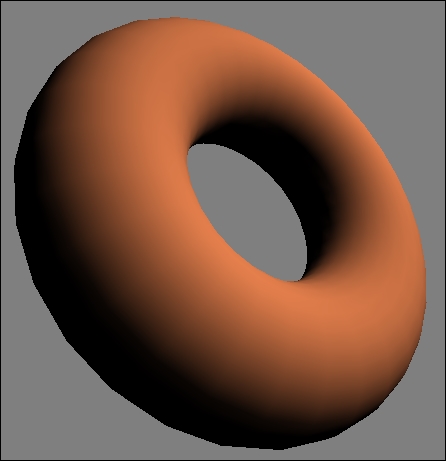One of the simplest shading techniques is to assume that the surface exhibits purely diffuse reflection. That is to say that the surface is one that appears to scatter light in all directions equally, regardless of direction. Incoming light strikes the surface and penetrates slightly before being re-radiated in all directions. Of course, the incoming light interacts with the surface before it is scattered, causing some wavelengths to be fully or partially absorbed and others to be scattered. A typical example of a diffuse surface is a surface that has been painted with a matte paint. The surface has a dull look with no shine at all.
The following screenshot shows a torus rendered with diffuse shading:

The mathematical model for diffuse reflection involves two vectors: the direction from the surface point to the light source (s), and the normal vector at the surface point (n). The vectors are represented in the following...



